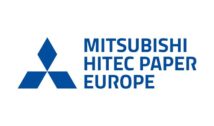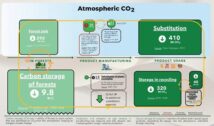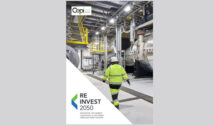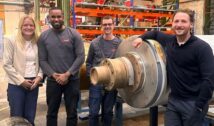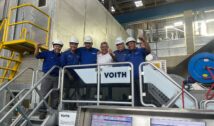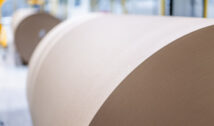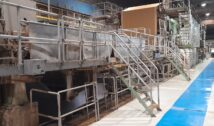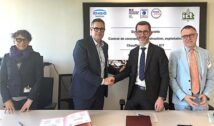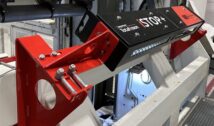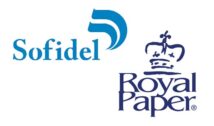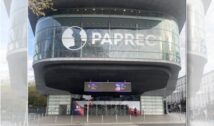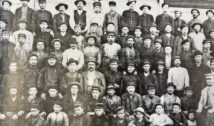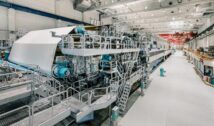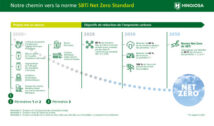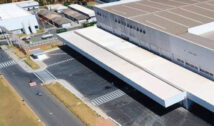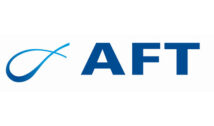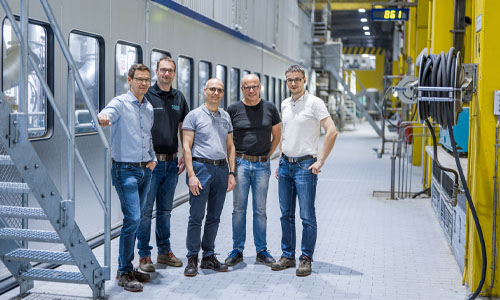
In March 2024, Voith carried out extensive upgrades to the predryer section and the heat recovery of paper manufacturer Jass’ PM 3 at its Fulda site. Since up to two-thirds of the energy consumed during paper production is required in the dryer section, Jass is achieving great savings potential and significantly increased machine availability at the site. The measures implemented during the month-long rebuild now show their effect: The company reports improved runability and energy savings in the dryer section of PM 3, which produces 280,000 tons of paper annually with basis weights of 120 to 140 g/m².
Despite several parallel works, the rebuild went smoothly and within the scheduled time. Voith’s expertise and good teamwork have contributed significantly to this success. We are extremely satisfied with the innovations, which we see as an important building block for our future.Michael Habeck, Technical Director at Jass
Our modular solutions are an effective way to modernize existing paper machines and unlock significant savings potential. With a rebuild phase of just under a month, we were able to noticeably increase the efficiency of the production processes at Jass and at the same time achieve energy savings in the dryer section.Stefan Kiel, Project Manager at Voith Paper
Clean Design for smooth operations
In the TG1 and TG2 dryer groups, Voith implemented a new Clean Design concept that was already introduced at the Schwarza plant in 2015. With this design, the drying process is carried out on internal guide rolls, which enables more convenient operation and has a positive effect on maintainability. In particular, the measure leads to an even more efficient and smoother production process. Modifications to the web stabilizers ensure stable web pickup from the dryer and good pocket ventilation. The dryer fabric tension was optimized with redundant sensors and the cleaning system was converted to Voith’s CleanLine Extract4D, which cleans the fabric with four-directional water jets to increase the permeability of the fabric. This increases drying efficiency and significantly improves the runability of the machine.
High-performance dryer section hood and heat recovery
The TG3, TG4 and TG5 dryer groups were replaced and a highly efficient EcoHood 65 dryer hood was installed.
With the rebuilt dryer hood, Jass can significantly increase its energy efficiency.Torben Schlieckau, Vice President Air Systems at Voith Paper
For years, we have been supporting our customers in optimizing their heat recovery systems.Torben Schlieckau, Vice President Air Systems at Voith Paper
Clean Design for smooth operations
In the TG1 and TG2 dryer groups, Voith implemented a new Clean Design concept that was already introduced at the Schwarza plant in 2015. With this design, the drying process is carried out on internal guide rolls, which enables more convenient operation and has a positive effect on maintainability. In particular, the measure leads to an even more efficient and smoother production process. Modifications to the web stabilizers ensure stable web pickup from the dryer and good pocket ventilation. The dryer fabric tension was optimized with redundant sensors and the cleaning system was converted to Voith’s CleanLine Extract4D, which cleans the fabric with four-directional water jets to increase the permeability of the fabric. This increases drying efficiency and significantly improves the runability of the machine.
High-performance dryer section hood and heat recovery
The TG3, TG4 and TG5 dryer groups were replaced and a highly efficient EcoHood 65 dryer hood was installed.
Compared to conventional dryer hoods with a dew point of around 60°C, energy savings of up to 25 percent are possible. Thanks to its closed design, the EcoHood 65 encapsulates the dryer section, thus ensuring maximum energy efficiency. At the same time, it provides safe access to the system through lift gates, access doors and screen change gates or via the hood roof to ensure optimal operation and maintenance. In addition, the EcoHood 65 is characterized by very good process control. Thanks to improved energy recovery, the drying process is significantly more efficient and the paper machine is more economical to operate.


